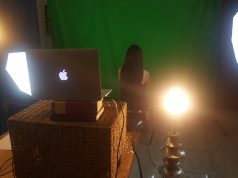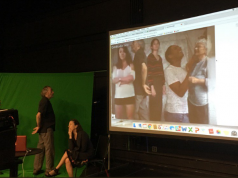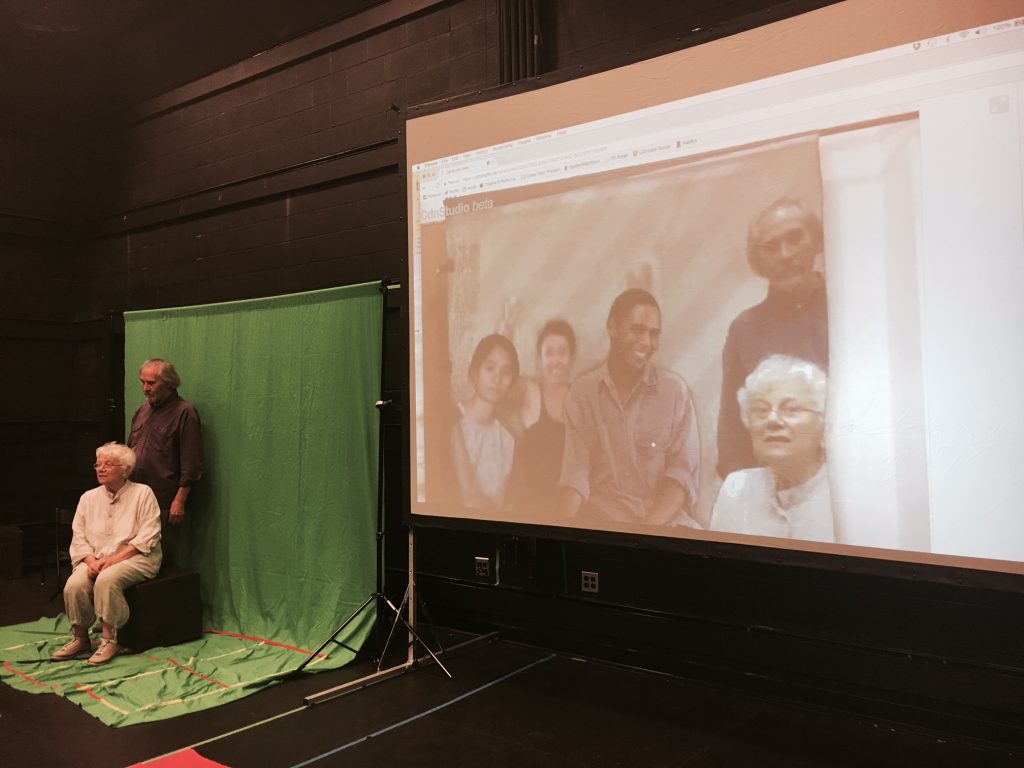
I recently signed on as an actor in SpiderWebShow’s The Revolutions, to help a passionate collection of thinkers, technical wizards and artists test a prototype for a new, digital, theatre delivery system.
Their long-term goal, it seems to me, is to enable actors in various, separate locations to play together, “live”, in front of live audiences. Given the current, mind-boggling pace of technological development, this dream may be ready for prime time sooner than one might think.
The play at the centre of the project, The Revolutions, by Rhiannon Collett, was performed, simultaneously, by six actors located in four cities (Vancouver, Toronto, Montreal and Kingston).
While the three actors in Kingston were physically present in front of the live audience, the other three actors and their performances were delivered to Kingston via internet, projected on a single screen. At certain magical moments it appeared that all actors existed together in the same place at the same time. Throughout, audiences were able to choose to view the goings-on of the life-sized actors actually in front of them, or experience all six blended together on the big screen.
Imagine a theatre where actors and spectators from a dozen—a hundred—a thousand—different places around the world are brought together in one place without actually needing, physically, to be there. Suppose they can look each other in the eye, listen, speak to one another, breathe and play together. All live, all in real time, all in three dimensions. Eventually, given enough data, participants at such gatherings might even be able to touch, taste, smell each other.
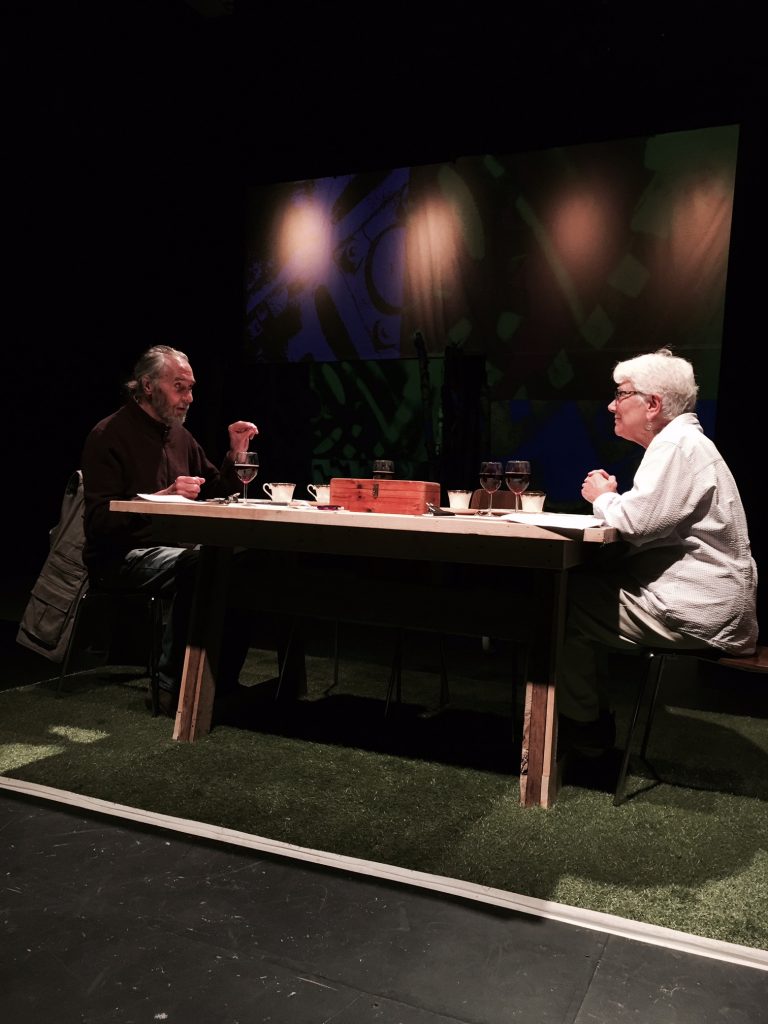
Based on my experience on the project, I believe this is the kind of theatre environment these artists are aiming for. Already, they can magically combine two-dimensional, moving images of actors and audiences in separate cities, making it appear as though they are all together in the same physical space.
For the present, however, this new use of technology cannot make the fundamental living connection between actor and actor, actor and audience that theatre depends upon. It’s not yet possible for actors to look at each other, bounce off each other, feel the audience breathe and be moved as one. It’s not yet possible for this technology to deliver live theatrical content as plausibly as actors can to an audience assembled around a campfire or pageant wagon; in a park, town square or purpose-built theatre; or storefront, historic site, elevator, moving train or subway car—for example.
To me, “theatre” signifies both an art form that specializes in narrative content (story) and the physical space in which the art is presented live to an audience (place).
In the case of The Revolutions, the play/story/content is relatively straight-forward. As worthy as it is, it would fit comfortably in a traditional theatre space. As would the actors’ performances.
What is potentially marvelous and revolutionary here is the nature of the theatre space/place/delivery system that SpiderWebShow envisions. However, if and when this new playpen in cyberspace becomes fully functional, what effect will it have on the stories human beings seem to need to tell each other face-to-face? What adverse, unintended consequences might there be?
Invention of the axe meant raised stages: more people could see the actors. Electricity meant more people could hear them, still see them after dark. Film meant exchanging theatrical immediacy for portability in time and space. “Live” television restored immediacy, but replaced storytelling with journalism, spectacle and games.
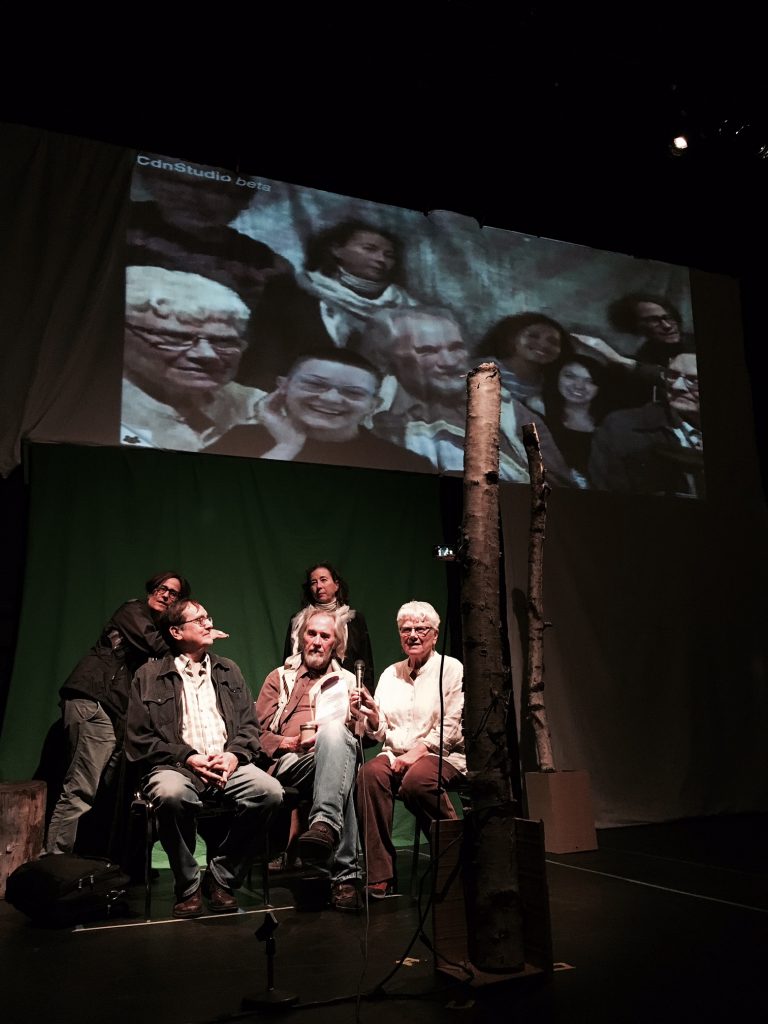
Over the centuries, in the face of developing technologies, the essential nature of stories hasn’t changed much—heroes and villains; beginning, middle, end; conflict, suspense, surprise; rising action, climax, resolution; order restored, lesson learned; and so forth. Changes in the social order have made the stories we tell less about kings and queens, more about ordinary humans; but, the fundamentals haven’t changed.
Artists are restless creatures, impulsively responsive to the changing world around them. They don’t want to sit forever, telling stories around some tribal campfire. Immutable story elements, solidly rooted—as they are—in human nature, can be seen as barriers to invention. It can be more fun to tinker with the medium than to imagine new stories to be told in old ways.
Right now, the world is overwhelmed and obsessed with digital technologies. There is barely an obstacle in the way of any actor wishing to communicate instantly in “real time” with any other willing spectator in the world.
One danger is, that altered media and new technologies often thrive best on trivial content. Ancient myths and enduring archetypes get shunted aside in favour of ersatz opinion, topical issues, gossip, viral misinformation, anonymous malice, contempt for art and grace. Authentic shared experience disappears into the cybersphere.
Authentic stories—especially those imagined and told by artists—connect us. Such stories nourish the human soul, place it in a universe of time and space. If artists are tempted to invent new media to tell stories, let them be sure story and art don’t get lost in the process.






